Check Key tools make it easy and safe to service check valves in backflow preventers
Maintaining backflow preventers is vital to ensuring that harmful contaminants from building systems don’t pollute city water supplies. But without the proper tools, attempting sprinkler system backflow valve repair or maintenance can make the situation worse—damaging the check valves you’re trying to remove, as well as your screwdriver and your hands.
In this blog, we will show how Backflow Check Key Tools make it easy for technicians to quickly and safely service check valves on Ames and Watts backflow preventers in the field. Manufactured by Watts Water Technologies, Ames and Watts represent two of the most popular brands of backflow prevention assemblies.
Be sure to check out our selection of Backflow Check Key Tools and Toolsets, which quickly remove or install cam checks found in Ames and Watts backflow prevention assemblies.
Plumbing codes require regular maintenance of backflow preventers
central water supply line is only meant to flow in one direction: into the property. But sometimes, pressure changes in the pipes can cause unwanted backflow, enabling water to reverse into city water supplies.
Backflow can be dangerous to public health and safety, contaminating public drinking water with fertilizers, pesticides, human waste, harmful chemicals, and more. Bacteria can also fester in the stagnant water in fire sprinkler system pipes, sometimes creating a thick, smelly, black, oily sludge that may cause serious issues if it reverses into a city’s drinking supply.
Remediating such backflow issues can be expensive: the Environmental Protection Agency (EPA) states that the average backflow incident takes nearly 500 hours to fix at a cost of $14,800.
The sole job of a backflow preventer is to keep drinking water pure by preventing the non-potable water in a building’s systems from backing up and contaminating it. “Potable” water supplies are treated and drinking-quality.
Our previous blog, “How Does a Backflow Preventer Work?“, offers extensive detail on how backflow preventers operate and when they are required on fire protection systems. Stay tuned for our next blog, which explains the difference between check valves and backflow preventers —helping property owners and facility managers understand why the added cost and complexity of more sophisticated backflow prevention assemblies are needed to protect drinking water.
Local plumbing codes set forth requirements for backflow preventers in building systems, such as fire protection equipment. They also typically require backflow preventers to be tested regularly and maintained by certified professionals to ensure they are reliable and functioning properly.
Be sure to check with your local water authority to understand specific requirements for backflow preventers in your area.
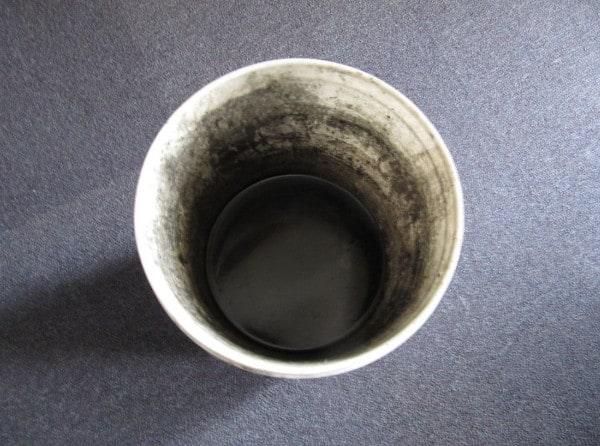
How does a backflow preventer work?
The most common backflow prevention assembly found in fire protection systems is the Double Check Valve (DCV). It relies on two cam checks, better known as check valves, assembled in a series to prevent water from backing up into the supply line. Together, they regulate the flow and pressure of the water that moves through plumbing and piping systems.
The redundant assembly ensures that one check valve will continue to protect the city water supply even if the other fails. It also enables the closure of one valve to reduce the pressure differential across the other, creating a more reliable seal and avoiding even minor backflow leakage.
Reduced Pressure Zone (RPZ) backflow preventers are typically used in sprinkler systems that are considered “high hazard” because they contain harmful chemicals like antifreeze that could threaten public safety if they seep into city water supplies.
RPZ backflow preventers add an extra layer of protection with the addition of a hydraulically operated differential relief valve. The relief valve makes RPZ devices basically fail-safe; if either check valve should leak, the relief valve opens and discharges water to the outside, ensuring that backflow never occurs.
Once installed, both types of backflow prevention assemblies are expected to provide decades of protection for city water supplies. But various conditions such as excessive water pressure, water quality, temperature, or dirt and debris can cause performance to deteriorate. Regular maintenance is also key to keeping backflow preventers in tip-top shape.
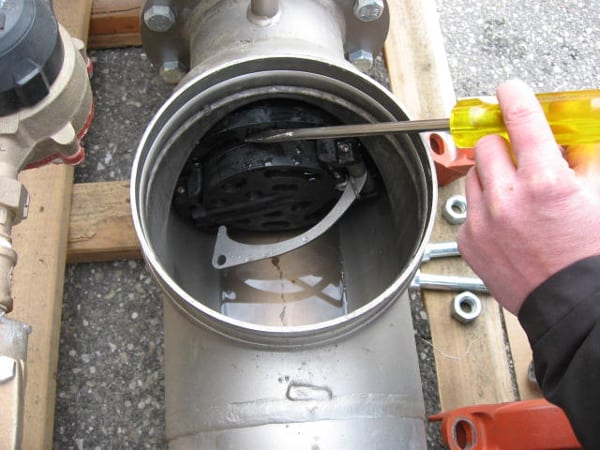
Check Key tools can eliminate the danger from servicing check cams on backflow preventers
Jupiter, FL-based Check Key emerged from the frustration of a licensed backflow tester and South Florida plumbing company owner. He was locked in a constant battle to remove stubborn cam checks while servicing Ames and Watts backflow assemblies. Without proper tools, he and other technicians also struggled to reinstall the valves tightly enough to properly seat them after service.
Manufacturers often recommend using a screwdriver to remove or replace check valves. Unfortunately, this technique can not only be dangerous, but it may not even work. In fact, if the check valve is installed correctly, the force needed to remove the assembly may break some tools and the cam check itself—and worse, injure the technician’s hands.
Comprised of durable, solid steel in a simple crosshair design, Check Key’s patent-pending tools were created to help technicians quickly and painlessly remove and replace check cams. When paired with a ½” drive ratchet or breaker bar, they easily turn check valves in the bodies of Ames Silver Bullet and Watts 774 – 994 backflow preventers.
The tools slide directly into the grooves on a valve’s perimeter, providing the necessary leverage to safely remove and precisely replace the #1 and #2 cam checks. The ratchet or breaker bar is not included.
Four separate tools designed to work with #1 and #2 check valves in 2 1/2″, 3″, 4″, and 6″ sizes can be purchased individually or in sets. Check Key tools work in both RPZ and DCV backflow preventers. Each device comes with a lifetime warranty against breakage under normal usage that includes full manufacturer replacement.
“The Check Key Backflow Tools were developed because Ames does not make a tool for the job, and we were tearing the check valves up getting them out,” the inventor of Check Key, a 39-year veteran of the plumbing industry, explains on the company website. “With Check Key backflow tool, there is no more tearing up the check valve by removing it with a screwdriver or having a leak from not installing it tight enough.”

How to use Check Key tools for sprinkler system backflow valve repairs or maintenance
Using Check Keys to remove or install cam checks is simple and consistent across every compatible backflow preventer:
- Line the Check Key tool up with the cam check.
- Rotate the tool until the “legs” align with and slide into the slots found on the valve’s perimeter. Slight pressure may be required for the Check Key to snap into place.
- After securing the tool inside the slots, attach a 1/2″ ratchet or breaker bar (not included).
- Rotate the Check Key tool to remove or install the check cam.
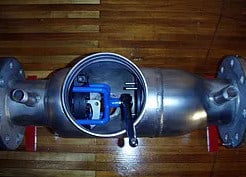
Here are some helpful tips:
- If the cam check doesn’t budge, wedge a small piece of wood in the opening between the tool and the valve. A 2×4 is a good size to use with a 6″ valve, and a 1×2 could work well with a 4” valve or smaller. Wedges can provide extra torque by pressing the tool tightly against the check valve while keeping a technician’s hands out of harm’s way in case the tool slips. For instance, the #1 check valve in an Ames 4000SS backflow preventer can be challenging to remove when new, and it often grows harder over time.
- When installing a new backflow check valve, lubricating the O-ring can help increase the ease of the process tremendously. Always follow the manufacturer’s guidelines and applicable laws when lubricating valves connected to potable water systems. Many Ames- and Watts-brand valves should be thoroughly cleaned and lubricated with Food and Drug Administration (FDA)-approved lubricant.
- For very tight check valves—especially the larger 6”—some ratchets will work better when paired with a “cheater” pipe that adds leverage. Check Key suggests sliding a piece of ¾” steel pipe that’s 2’ long over the handle of the ratchet to provide the needed leverage without breaking the tool.
What backflow preventers work with Check Key tools?
Check Key tools are ideal for technicians who regularly work with Ames and Watts backflow preventers.
Compatible Ames-brand backflow preventers include:
- Ames Series 2000SS (2 1/2 – 6″)
- Ames Series 3000SS (2 1/2 – 6″)
- Ames Series 4000SS (2 1/2 – 6″)
- Ames Series 5000SS (2 1/2 – 6″)
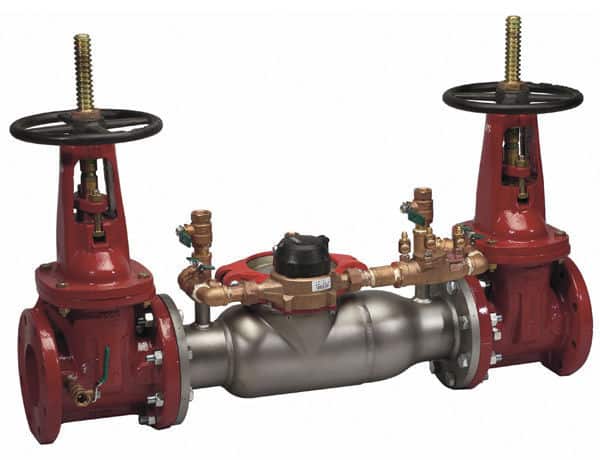
Compatible Watts-brand backflow preventers include:
- Watts Series 774 (2 1/2 – 6″)
- Watts Series 774DCDA (2 1/2 – 6″)
- Watts Series 994 (2 1/2 – 6″)
- Watts Series 994RPDA (2 1/2 – 6″)
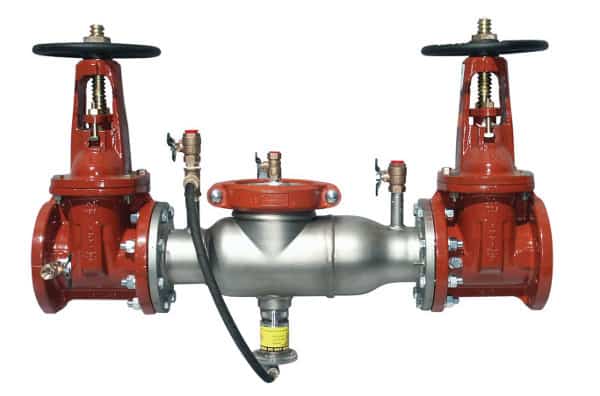
The four keys in the complete Backflow Check Key Tool Kit, which are also sold individually, can be used as follows:
- Small #1: Fits 2 1/2″, 3″, and 4″ #1 Cam Check Valves
- Small #2: Fits 2 1/2″, 3″, and 4″ #2 Cam Check Valves
- Large #1: Fits 6″ #1 Cam Check Valves
- Large #2: Fits 6″ #2 Cam Check Valves
Regular service helps backflow preventers keep city water supplies safe
Regular maintenance and timely repairs are vital to a backflow preventer’s ability to protect drinking water from potentially harmful contamination. But until recently, removing and installing check cams from backflow assemblies could be a difficult process—risking injury to the valve, service tools, and a technician’s hands.
Backflow Check Key Tools easily remove and replace check valves from Watts and Ames backflow prevention assemblies, ensuring non-potable water in building systems doesn’t flow the wrong way.
Ready to make servicing backflow preventers painless and straightforward? Be sure to check out our selection of Backflow Check Key Tools and Toolsets.
This blog was originally posted at blog.qrfs.com. Check us out at Facebook.com/QuickResponseFireSupply or on Twitter @QuickResponseFS.



It’s great to know that the central water supply line is only supposed to flow towards the property. My brother is having issues with his sprinkler system right now and he needs help. I think that he should find a plumber that can help him prevent some of the backflow issues he is having.
It is a common problem for the central water line to flow in correctly without a proper backflow preventer. Thank you for this article that sheds light on this common issue.